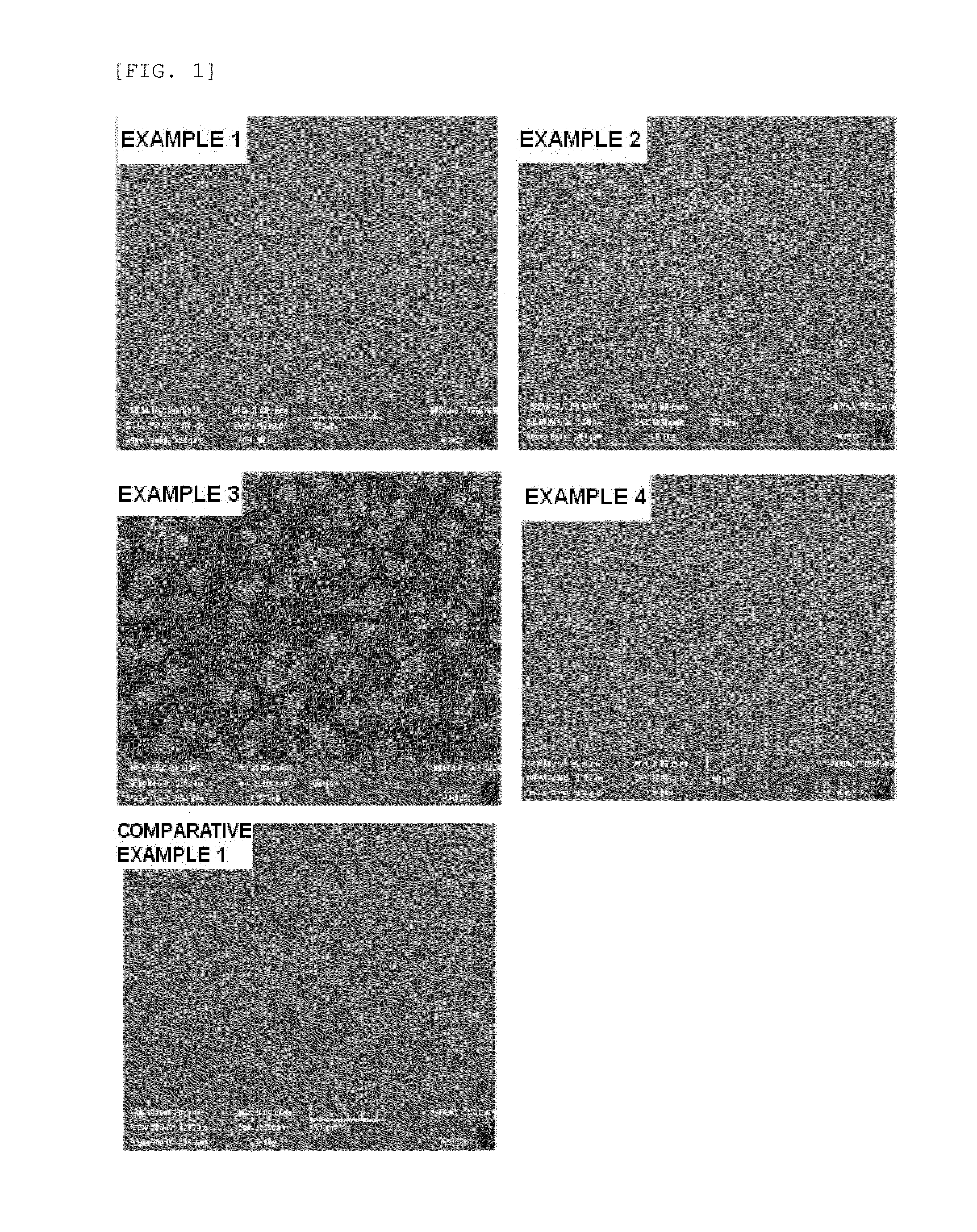Method for manufacturing high-efficiency inorganic-organic hybrid solar cell
- Summary
- Abstract
- Description
- Claims
- Application Information
AI Technical Summary
Benefits of technology
Problems solved by technology
Method used
Image
Examples
example 2
[0136]A solar cell was manufactured by the same manner in Example 1 except for using a methylammonium leadtriiodide (CH3NH3PbI3) solution prepared by changing a molar ratio of methylammonium iodide (CH3NH3I) and lead diiodide (PbI2) to 1.25:1 as a light absorption solution.
example 3
[0137]A solar cell was manufactured by the same manner in Example 1 except for using a methylammonium leadtriiodide (CH3NH3PbI3) solution prepared by changing a molar ratio of methylammonium iodide (CH3NH3I) and lead diiodide (PbI2) to 0.9:1 as a light absorption solution.
example 4
[0138]A solar cell was manufactured by the same manner in Example 1 except for using a methylammonium leadtriiodide (CH3NH3PbI3) solution prepared by changing a molar ratio of methylammonium iodide (CH3NH3I) and lead diiodide (PbI2) to 1.5:1 as a light absorption solution.
PUM
 Login to View More
Login to View More Abstract
Description
Claims
Application Information
 Login to View More
Login to View More - R&D
- Intellectual Property
- Life Sciences
- Materials
- Tech Scout
- Unparalleled Data Quality
- Higher Quality Content
- 60% Fewer Hallucinations
Browse by: Latest US Patents, China's latest patents, Technical Efficacy Thesaurus, Application Domain, Technology Topic, Popular Technical Reports.
© 2025 PatSnap. All rights reserved.Legal|Privacy policy|Modern Slavery Act Transparency Statement|Sitemap|About US| Contact US: help@patsnap.com


